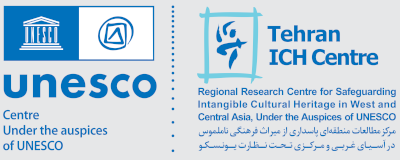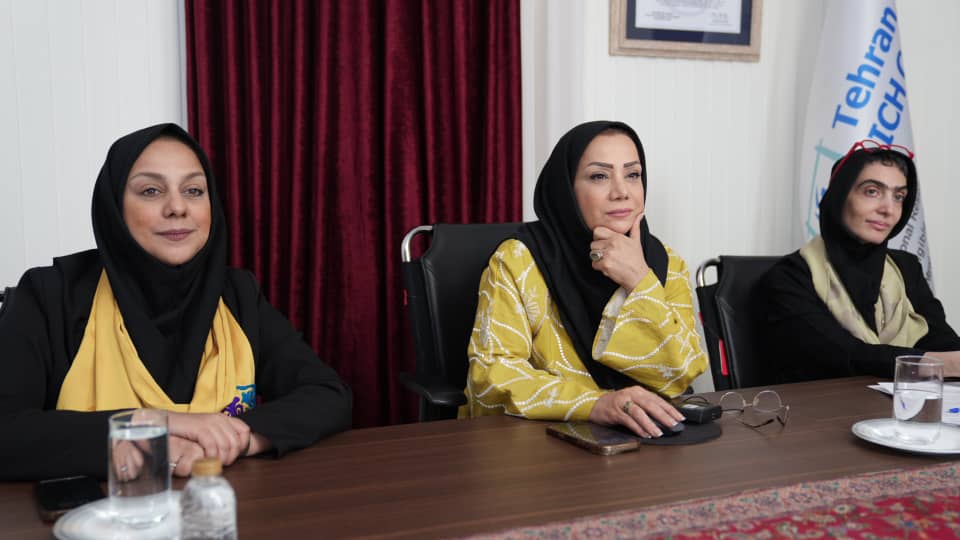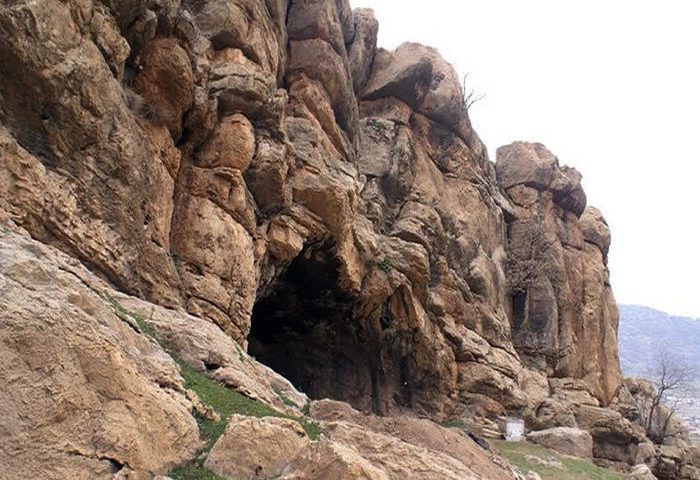Introduction
On 21 May 2023, the Regional Research Centre for Safeguarding Intangible Cultural Heritage in West and Central Asia (under the auspices of UNESCO), referred to in short as the “Tehran ICH Centre”, organised an event with the Ministry of Cultural Heritage, Tourism and Handicrafts, the Ministry of Culture and Islamic Guidance, the Ministry of Foreign Affairs and the Iranian Cultural Council, to celebrate the cultural diversity of Iranian ethnic communities.
The event, entitled “Commemorating Cultural Diversity”, brought together thirty representatives of resident foreign missions and UN agencies, ECOCI, the Iranian Minister of Culture and Islamic Guidance, Deputy Minister for Culture, PMs, mayors, representatives of Iranian ethnic groups, representatives of inscribed Iranian learning and creative cities and culture professionals and actors as well as bearers of some elements of the Iranian Intangible Cultural Heritage that are inscribed on UNESCO’s Representative List (Bakhshi music and Naqali).
An exhibition of Iranian creative and learning cities and ethnic groups, showcasing their diverse cultures was the highlight of this event.

Background Information
UNESCO’s 2003 Convention on safeguarding Intangible Cultural Heritage explicitly states the crucial importance of safeguarding cultural heritage as a means of ensuring the diversity of the related cultural expressions in the future. Having been adopted by UNESCO two years after the Universal Declaration on Cultural Diversity (2001) this treaty can be seen, in part, as a response to that foundational document whose Action Plan called for the formulation of “policies and strategies for the preservation and enhancement of the cultural and natural heritage, notably intangible cultural heritage (ICH)…”. In the Preamble to the 2003 Convention, safeguarding Intangible Cultural Heritage (ICH) and ensuring its transmission to future generations is not only seen as a key foundation for ensuring the future of cultural diversity, but this is also linked with ensuring sustainable forms of development.
A main purpose of this meeting was therefore to explore the roles that safeguarding intangible cultural heritage and UNESCO’s 2003 convention play and have played in protecting and promoting cultural diversity. This relates not only to the cultural diversity that is found among the elements of ICH that are present today, but also the diversity that exists among cultural groups and communities that are actively creating, maintaining and transmitting this heritage.
This meeting was an effort to celebrate cultural diversity of Iranian ethnic groups as a value that provides societies and cultural communities that make them up with strength and a range of resources that can support their identities and their ways of life. It was also sought to demonstrate how the various manifestations of intangible cultural heritage and our apparent differences can serve as the basis for mutual learning and respect while, at the same time, help us find our common humanity.
Speakers (in order of delivering talks)
- Dr Seyyed Majid Emami
Secretary, Iranian Cultural Council
- Hojatoleslam Nikbin
PM, representing the City of Kashmar
He read the message of the President of the Islamic Parliament of Iran (Speaker of the Iranian Parliament), Dr Mohammad Bagher Ghalibaf
- Hojatoleslam val-Mosleimin Abdolhossein Khosropanah (PhD)
Secretary, Supreme Council of the Cultural Revolution
- Dr Ali Darabi
Deputy Minister for Cultural Heritage,
Ministry of Cultural Heritage, Tourism and Handicrafts
- HE Dr Mohammad Mehdi Esmaeili
Minister of Culture and Islamic Guidance
Summary of speeches
First speaker of this session was Dr Seyyed Majid Emami, Secretary of the Iranian Cultural Council. He introduced “unity in diversity” and “diversity in unity” as the epitome of cultural diversity in the Iranian society. He drew a comparison between the Iranian society with a flower garden, where different flowers have come together to weave the great Iranian carpet from the pre-Islamic era, to the Islamic and the pre-and post-revolutionary periods. He then explained that we are bound by the Constitution of the Islamic Republic of Iran and the vision of our leaders to respect the vast cultural diversity of the Iranian society and that preserving and promoting cultural diversity is a pre-requisite for strengthening the Iranian national unity and identity. To conclude, he referred to the Iranian cultural diversity as a tool enabling the connection of the Country with other nations worldwide, while calling on the international community to take account of cultural diversity and to preserve and promote it.
Second speaker of this session was Hojatoleslam Javad Nikbin, PM, representing Kashmar City at the Islamic Parliament of Iran, who also read the message of HE the President of the Islamic Parliament of Iran, Dr Mohammad Bagher Ghalibaf.
Mr Nikbin introduced cultural diversity not as a threat but an exceptional opportunity enabling cultural transfer, saying that one of the best tools for cultural transfer is music and one of the best contents for the transmission of cultural diversity is poetry.
He then continued by reading out the message of the Speaker of the Islamic Parliament of Iran, HE Dr Mohammad Bagher Ghalibaf, whose message, in brief, read as below:
“The cultural heritage, which is the result of the diversity of Iranian ethnic groups and the tangible and intangible manifestations of this diversity that are the outcome of the peaceful coexistence of these diverse groups is a great potential of our country and its preservation and promotion is the responsibility of the entire nation. In all their diversity, the Iranian ethnic groups have always protected the territorial integrity of our country in cooperation with one another. By preserving their national identities, the diverse ethnic communities of Iran form an inseparable part of our collective Iranian identity. Introduction to our ethnic and cultural identity is a tool for connecting with other countries, a means of cultural exchange, attracting people from various cultures who are interested in the Iranian culture and an endless wealth for the just development of the Country. Appropriate policy-making in line with the cultural diversity of our dear country, Iran, is the responsibility of policy-makers who need to be informed of the cultural capacities of the nation. To conclude, the readiness of the Parliament to support all relevant policy-making practices was emphasised”.
The third speaker was Hojatoleslam val-Mosleimin Abdolhossein Khosropanah (PhD). As the Secretary of the Supreme Council of the Cultural Revolution, he began by introducing a philosophical issue regarding the prevailing perception on cultural diversity, saying that for some people cultural diversity is thought of as the outcome of the absence of a criterion-based valorisation of diversity of cultures. However, in reality this is not the case and the outcome of a non-criterion-based valorisation of values is not cultural diversity but cultural anarchism, while cultural diversity is absolutely wisdom-based. “Being based on wisdom, it is necessary to preserve and promote cultural diversity”, said the speaker. To continue, the speaker referred to the cultural diversity inherent in the various Iranian schools of music and handicrafts, emphasising the need to preserve and promote cultural diversity.
Fourth speaker of the event was Dr Ali Darabi, Deputy Minister for Cultural Heritage. Dr Darabi began his speech by referring to the importance of cultural diversity as the essence of a world with over 10.000 diverse human communities who live in an area constituting over 200 countries and the important role attributed to the preservation of cultural diversity as a tool enabling each of these communities to enjoy their rightful cultural specificities in line with the principles of human rights and fundamental freedoms of man. “All cultures should be offered equal opportunities for action without discrimination of any kind”, he said. He added that the principle of pluralism is an important matter that needs to be taken account of both nationally and internationally. “It is in the face of a monoculture, that cultural diversity gains importance”, said Dr Darabi, emphasising the need to preserve and promote cultural diversity, in order to avoid the formation of a monoculture. Further into his speech, he defined the principles of the cultural policy of Iran as: a) respecting cultural diversity; b) creating equal opportunities for diverse social and cultural communities to thrive; and c) protecting marginalised cultures. He brought examples of various multinational inscriptions of cultural heritage and intangible cultural heritage by Iran and her neighbouring countries on various UNESCO lists as a sign of Iran’s acceptance of cultural diversity and efforts in preserving and promoting it. To conclude, he explained how the Country has applied cultural diversity to promoting peace between the diverse Iranian ethnic groups. “Dialogue, peace and justice can be substituted for conflict and wars as a result of (respecting) cultural diversity”, said the speaker.
HE the Iranian Minister of Culture and Islamic Guidance, Dr Mohammad Mehdi Esmaeili, was fifth to speak at the event. The Minister reiterated that the principle of cultural diversity is among the basic perspectives governing cultural policy- and decision-making in the Islamic Republic of Iran. “In this sense, the Islamic Republic of Iran has always been a forerunner in the preservation and promotion of cultural diversity in the international arena”, explained the Minister.
Clarifying the historicity of Iran and her grand civilisation, the Minister said: Iran has been the abode of many different communities with diverse cultural and ethnic backgrounds throughout history, whom together have contributed to the formation of the greater Iran. By referring to the fact that the geographical domain of Iran is not limited to the territory within the borders of the Country, the Minister said: “the surface area of cultural Iran covers an area including the neighbours with whom she lives in peaceful co-existence”. He identified Iran as a strong advocate of cultural diversity, saying that Iran is against the formation of a monoculture because it would annihilate diverse cultural rites and traditions of cultural communities and contribute to the mainstreaming of cultural traditions among nations.
The Minister also informed the participants of the imminent formation of an entity under the title of “The House of Communities”, at Niavaran Cultural Center.








To conclude the ceremony, certificates of acknowledgment were awarded to 8 cultural professionals by high ranking officials including:
- HE Dr Mohammad Mehdi Esmaeili,
Minister of Culture and Islamic Guidance
- Dr Ali Darabi,
Deputy Minister for Cultural Heritage,
Ministry of Cultural Heritage, Tourism and Handicrafts
- Hojatoleslam val-Mosleimin Abdolhossein Khosropanah (PhD),
Secretary, Supreme Council of the Cultural Revolution
- Moineddin Saeedi,
PM, Representative of Chabahar City
- Dr Seyyed Majid Emami,
Secretary, Iranian Cultural Council
- Dr Atusa Momeni (Mrs),
Acting Director of the Tehran ICH Centre
The 8 award receivers included:
- Dr Behrooz Vojdani (Anthropologist and Music Researcher)
For his leading role in the preparation of the nomination file for the inscription of the “Music of the Bakhshis of Khorasan”, on the Representative List of the Intangible Cultural Heritage of Humanity.
- Dr Mahmood Taleghani
For his efforts in planning and implementing the project of “Gilan Rural Heritage Museum”.
- Dr Mahin-naz Mirdehghan (Mrs)
For her 20 years of effort in teaching Farsi/Persian to non-Persian speakers
- Ms Maryam Haj Ebrahimi
Deputy for Handicrafts, Golestan Province Cultural Heritage Office
For her efforts in organising and holding the “۱۵th festival of Iranian ethnic communities”
- Ms Zahra Arab Ali Doost
Researcher and advocate of the clothing of Iranian ethnic communities
- Maziyar Aledavoud
Founder of Eco-lodge accommodations (promoting ecotourism) in Iran
- Representative of Rasht creative city
- Representative of Bandar-e Khamir learning city




